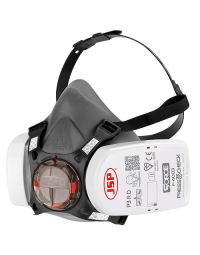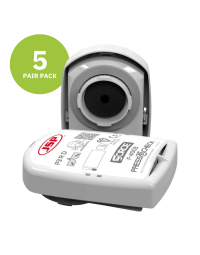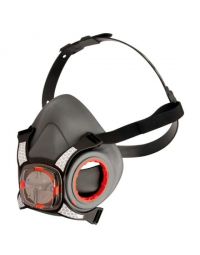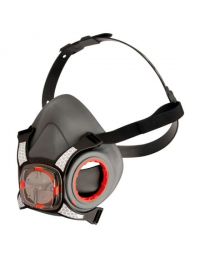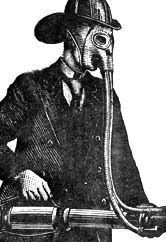

History of Respirators
The first documented usage of respiratory protective equipment dates back to the early First Century by Roman Author, Pliny the Elder, who used animal bladders to filter dust when crushing cinnabar, a toxic sulfate mineral. Further on from this, famed artist Leonardo De Vinci (1452 -1519) recommended the use of a wet cloth over the nose and mouth to prevent harmful contaminants being inhaled. Despite recognition of the dangers of inhaling toxins, it was not until over 200 years later, when the lungs of a stone cutter were examined, and they discovered that a large quantity of stone and sand believed to have disrupted his airflow and caused his death. This discovery was the beginning of understanding the damage that airborne hazards can present to respiratory health.
In 1848, Lewis Haslett marked the first leap towards the standardisation of RPE. With the original name of 'inhaler', Haslett created an air purifying respirator. His filtration system was a combination of moistened wool and a one-way clapper valve to filter dust, however, offered no protection against harmful gasses. Moving swiftly on to World War 1, the use of chemical warfare weapons, containing chlorine, phosgene and mustard gas, called for a mass production of gas masks. They were made with rubber face pieces and charcoal cartridges along with particulate filters. The gas masks used since the early 1900s have set the standards and principles for the title fitting PPE that is used today.
Modern Advancements
Gone are the days of animal bladders, a boom in medical research, certification standards and regulatory bodies have set new expectations for health and safety in hazardous environments. This means that users can now go to work protected properly, and have a far more reduced risk of damage to their lungs and airflow.
Modern respiratory masks are now designed to be multifunctional, sustainable, and equiped with advanced filtration technology. Leading manufacturers like JSP provide high-quality masks featuring integrated protection, interchangeable filters, and custom-fit designs.
A standout innovation in fit and comfort adjustments is PressToCheck™, developed by JSP. This system offers the quickest an most reliable way to perform a face-fit check, ensuring a secure seal every time before entering a hazardous zone. Widely accessible yet highly customisable, PressToCheck delivers top-tier protection, making it an essential choice for professionals who prioritise both safety and convience.
The Importance
Health and Safety Executive (HSE) estimate that 13,000 deaths occur every year due to lung disease and cancer, ontop of this, 4,000 deaths a year are caused by chronic obtrusive pulmonary disease, due to past workplace exposure to harmful fumes and particles.
Wearing respiratory protective equipment is crucial for safeguarding against airborne particles and contaminants such as dust, fumes and pollutants. By effectively filtering the air, these masks prevent harmful substances from being inhaled, helping protect against the development of respiratory conditions like COPD or asthma.
Wearing a mask goes beyond compliance - it is about prioritsing safety, health and long-term well being in any environment where air quality is comprimised. The right respiratory mask is not just a precaution, it can be life saving tool that ensures a healthier future in high-risk environments.



